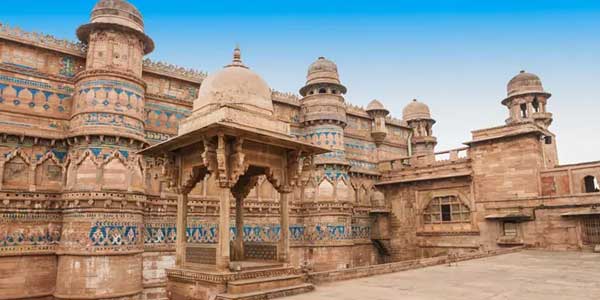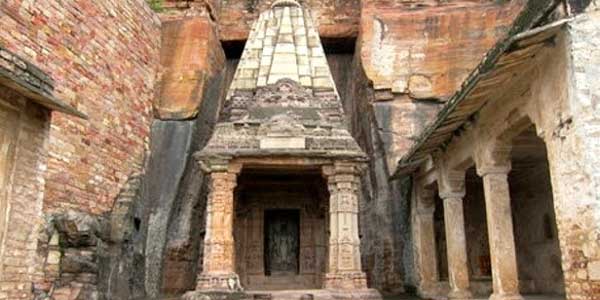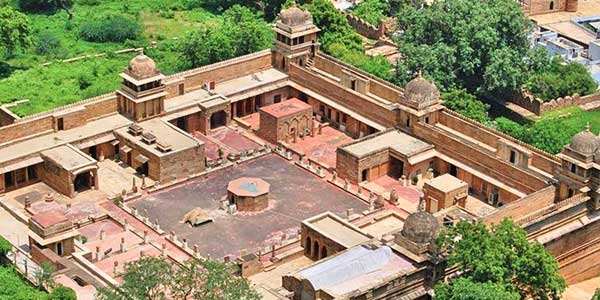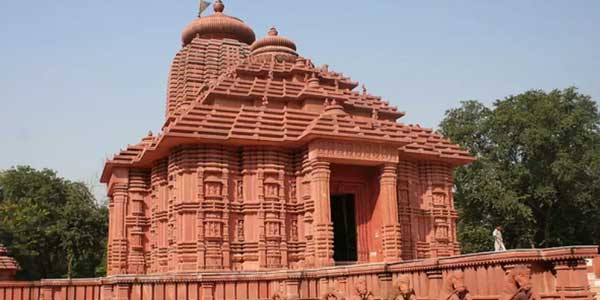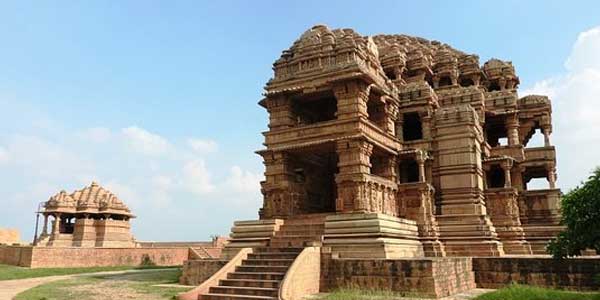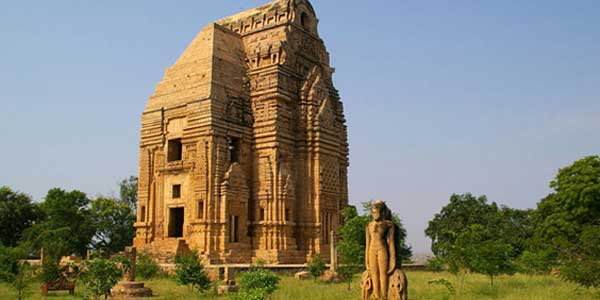
Sas Bahu Temple in Gwalior
Sas Bahu Temple – Its name, architecture or history, simply everything about this temple is unique and thus so attractive. This temple was constructed in 1092 by King Mahipala of the Kachchhwaha dynasty. The temple is 32 meters long and 22 meters wide and has three gateways facing three different directions and there is a room (presently locked) in the forth direction. This magnificent temple welcomes all with its explicitly carved idols of Lord Brahma, Vishnu and Shiva at the doorway.
The temple derives its name from the word “Sahastrabahu” which portrays a man with a thousand hands. Lord Vishnu. As per the legends, the wife of the king of Kachchhwaha dynasty was a devotee of Lord Vishnu while her daughter-in-law worshipped Lord Shiva. Thus, eventually two temples were built, one after the another. These adjacent temples are known as the Sas Bahu temple. Both the temples are similar in architecture, with the beautiful lotus carving on the roof of the larger temple.
Brilliant carvings and elaborated structure of the Sas Bahu temple speak of the artistic brilliance and skills possessed by artisans and sculptors in that era. One should not miss the picturesque views of the Gwalior city from the temple area. You can also walk to the temple from the Gwalior fort if the weather is suitable for it. Though the inner parts of the temple is not open for visitors, still the Sas Bahu temple is a prime attraction of the city.
Gwalior Monuments
Gwalior Monuments lies to the south of Agra, about 122 km. A historic town renowned for its ancient and magnificent forts and palaces, Gwalior is home to many tourist attractions worth visiting when on a tour of Madhya Pradesh to Gwalior. Gwalior's temples and museums are among the city's many tourist attractions.
Gwalior occupies an significant role in the medieval history and struggle for independence in India. The town is also renowned for being home to many of the country's respected colleges and schools. Rich in cultural heritage and architectural marvels, Gwalior was placed under the control of many dynasties of the Pratiharas, Kacchwahas and Tomars heroic Rajput clans. This city has preserved its rich cultural heritage, expressed marvelously in its palaces , temples and museums.
The Gwalior Monuments and Museums attract numerous visitors from every corner of the globe to Gwalior. Gwalior Monuments and Museums are not only buildings in stone and brick, but they are the living examples from which we can go back in time and discover India's past.
Gwalior India's Monuments in and Museums are outstanding examples of the glorious architectural heritage of the past. For decades, the remains of such buildings tended to fascinate art lovers and historians. The Monuments and Museums in Gwalior, worldwide revered for their architectural splendour, owe their execution to the imagination of great rulers of the past Those who dared to push their thoughts to the very limits of human thinking. From the pages of their history book each of these monuments narrates a distinctive tale. Gwalior museums houses a rich and varied array of ancient sculptures, artifacts, and buildings.
Built on steep sandstone ground, Gwalior Fort is the most exemplary among the Gwalior Monuments and Museums. Another famous monument inside the walls of the Fort is Gujari Mahal from the 15th century – designed as a symbol of Raja Mansingh Tomar 's love for his Gujar wife, Mrignayani. Constructed between 1486 and 1517 by Raja Mansingh, Mansingh Palace is yet another wonderful architectural splendor. The Jai Vilas Palace-current residence of the Scindia family-is also popular among the monuments and museums in Gwalior. Constructed to show a fine mix of Tuscan and Corinthian architectural styles, this palace is one of the city's main attractions.


